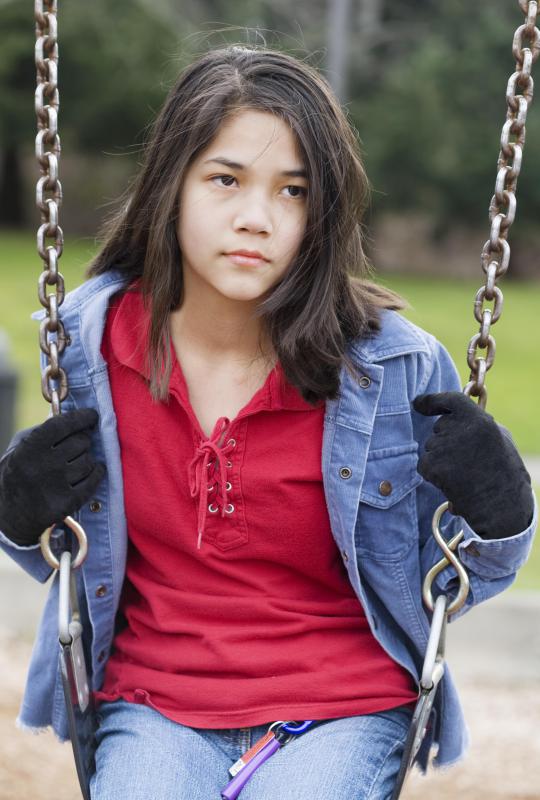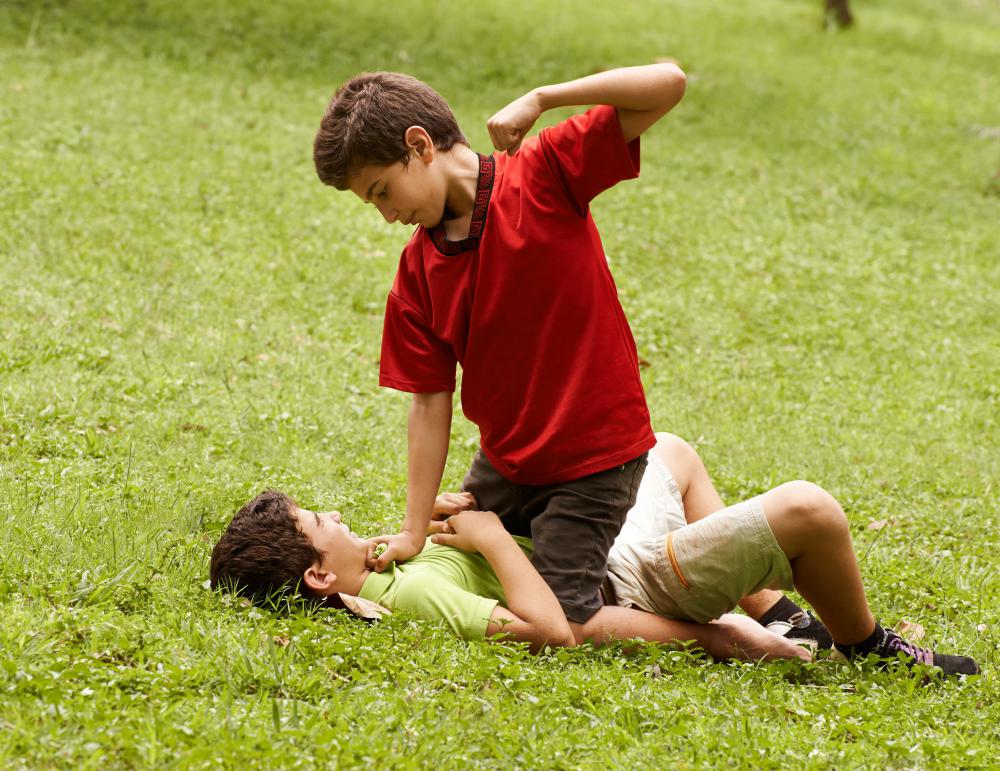At WiseGEEK, we're committed to delivering accurate, trustworthy information. Our expert-authored content is rigorously fact-checked and sourced from credible authorities. Discover how we uphold the highest standards in providing you with reliable knowledge.
What Is a Combined School?
The term “combined school” is used in several different senses and the meaning is not always obvious from the context. Confusingly, some schools have “combined” in their name, but don't actually have any traits associated with combined schools. The uses of this term have also evolved over time, which can lead to some confusion in terminology.
The original sense of the word comes from England, where it was initially used to refer to a school which took students from ages four to 12. Such schools literally combined schools which normally separated students out by age group. The practice of combining to serve a large age range of students was adopted and used in other regions of the world, along with the term “combined school.”

There are a number of reasons to operate this type of school. One common reason is concerns about funding, or a shrinking student body. A school district may believe that the students in one area could be better served in this type of school than in separate facilities. Running this type of school is less expensive than handling a preschool, elementary school, and middle school as individual educational institutions, and when a student body is small, students may enjoy the connections with other students available in a combined school.

Combined schools can include a variety of age ranges. Some may handle students all the way through high school, while others may take children starting in the lower grades and move through middle school, sending very young children and high school students to different schools. The approach this type of school takes is dependent on the demographics of the community and the option the school district thinks is best.

Districts may also be periodically combine themselves, or schools within their districts. This is often usually done for financial reasons. Two neighboring districts might believe that students would be better served by uniting the resources of both districts, for example, or a district might opt to close a school and combine its students with another because enrollment is falling, performance is slipping, or funds are tight.

Social tensions can sometimes be observed at a combined school. Mixing a broad range of age ranges can expose younger children to bullying from older ones, which can be problematic for some students. Combining districts can sometimes cause class and racial clashes as people who formerly attended different schools are forced to interact with each other.
AS FEATURED ON:
AS FEATURED ON:


















Discussion Comments
The way that it used to work around here was that we had a school for each small town and community, more or less.
Depending on the specific location of the school, you might have, say, a K – 3rd grade in one school, then a middle school and then a high school.
Some years ago, however, the county in which we reside decided that the high schools among different specified areas should combine. The younger schools would remain divided by specific area.
Boy, there was a whole lot of confusion when we went from having 11 high schools to 3. Everybody was furious because, of all things, they were losing their individual football teams and mascots.
It was a huge deal, and most folks in our area two decades later still don’t like it to those day.
My school district combined with another school district to give the students a chance to take advantage of more activities and extra curricular activities.
This was just the start of what ended up being a complete combination of both schools. This process was done over a period of time with a few changes being made each year.
I am sure that financially this saved both schools quite a bit of money. I know that the busing issue alone was a big expense.
When you have small, rural school districts that are struggling to make it, a combined school makes a lot of sense.
I am sure there are a lot of obstacles to work through, but the end result is probably best for all those who are involved.
When I was in high school, our school district combined with another school because of funding issues. Both of the school districts were small schools within a few miles of each other.
Since both districts were struggling with money issues, they decided to combine the schools together. This was a major undertaking and resulted in quite a bit of conflict regarding location, teachers, athletics, names, etc.
This has been several years ago, and all of those issues have been worked out, but I remember how chaotic it was when we were first going through it.
Neither of those small communities have grown and have actually declined in size since then. It is a good thing they decided to make a combined school when they did. It would have needed to be done eventually anyway and sooner was probably better than later in this situation.
I went to a combined school for most of my elementary school years and really didn't find that bullying was a problem. The older kids minded their own business, and the younger kids were segregated onto another playground.
It seems to me that it really depends on how your school is combined. For our school we were technically one school but had separate floors and outdoor areas depending on the age group you were in. The kindergarten children had their own area, and the elementary school had theirs. The few middle school classes we had were actually given different recess times and had their own lunch room.
I think that combined schools can work well if enough segregation is put in place to accommodate all the different ages.
When I first started looking at different schools to send my children to I actually liked the idea of a combined school. I have children that normally would have been shipped off to different schools because of their age differences, but having them in one school seemed like a huge advantage.
Firstly, I wouldn't have to worry about arranging transportation to two different locations and it seems easier to deal with the staff at just one school, rather than two.
While I could have sent my kids to separate schools I am happy that I found a combined school that would accommodate them. Nothing is better than being able to drop my kids off at one place and knowing they are both getting a quality education.
@Icecream17 - You have a point, but I think that older children can benefit from being with younger children because they can serve as leaders of the school and possibly mentor younger children which can be both positive for the individual child as well as for the school community as a whole.
In my son’s elementary school the fifth grade students were paired up with the second grade students in order to do a school project together. This also allowed the second and fifth graders to get to know each other and it offered the fifth graders a chance to help the second graders and the second graders were able to bond with the fifth graders which helped prevent any bullying in the school.
It really was a great idea that allowed both sets of children a chance to grow emotionally.
I understand the financial reasons to have a combined school but it is not always a good idea. Sometimes older children are exposed to things as they get older that they may share with younger children which may not be appropriate.
Some of these older children for example, might share profanity or discuss things that are not age appropriate for younger children. Many older children are exposed to programs and movies with adult themes and may discuss the topics around the younger children.
Bullying is also another factor to consider as well. I think that children need to have a chance to experience their normal childhood without having to grow up too fast.
Post your comments